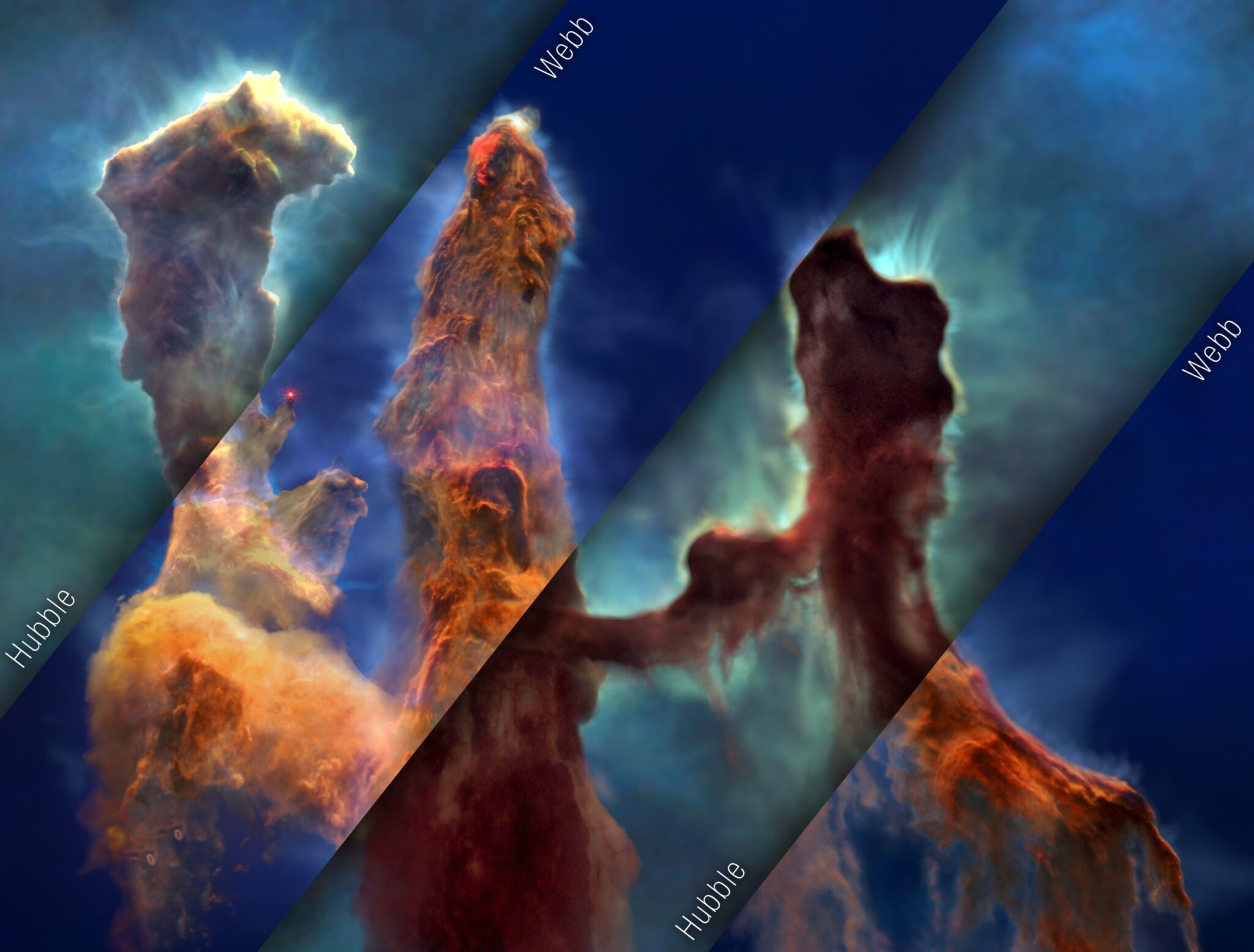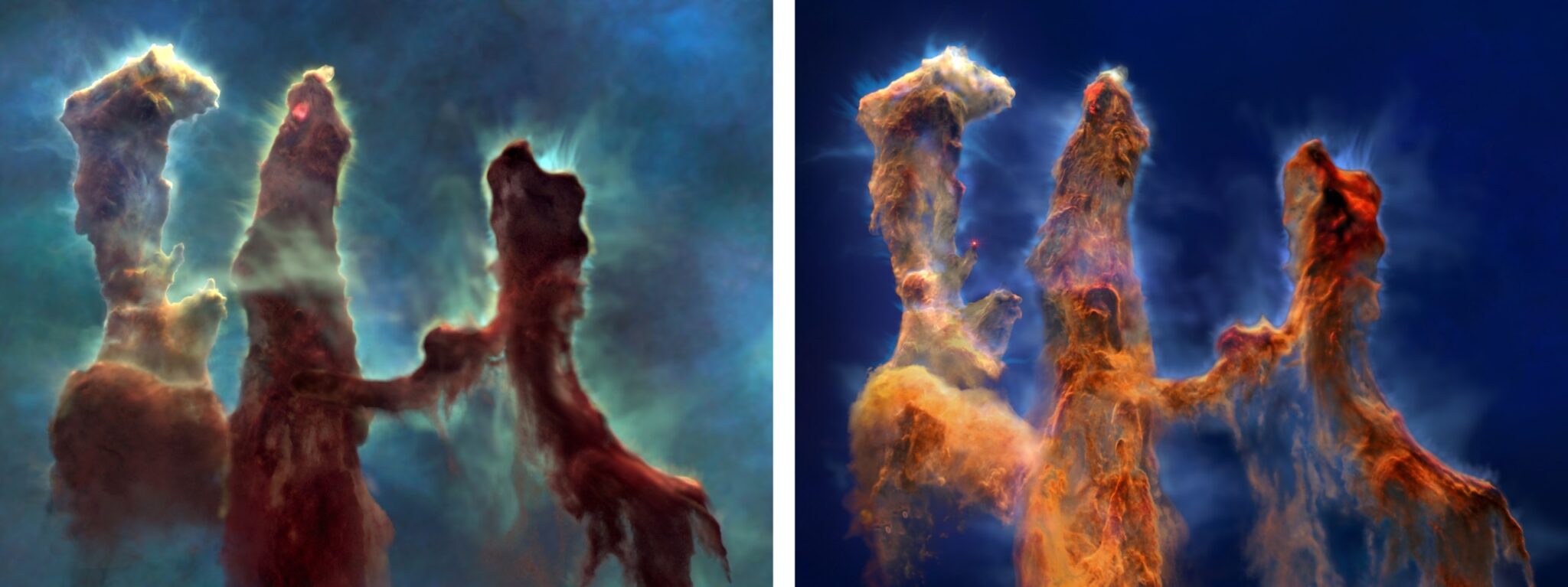The majestic towers of cosmic dust and gas at the heart of the Eagle Nebula, named the Pillars of Creation, have fascinated astronomers from the moment they were captured by the Hubble telescope. NASA recently released the most detailed 3D visualization of this celestial structure, revealing its structure and emission in different wavelengths of light.

NASA astrophysicists used data from the Hubble and James Webb telescopes to create the visualization. Thus the Pillars of Creation can be seen in both the visible light of Hubble and the infrared light of James Webb. Frank Summers, chief visualization scientist for the Cognitive Universe Project, said the contrast helped understand the importance of having multiple telescopes to study a single object.
The Hubble telescope observes objects in visible light at high temperatures, while James Webb’s infrared vision is sensitive to colder objects. This allows JWST to penetrate through the dust and see the stars inside the pillars. In Hubble, the pillars appear as dark brown dust and bright yellow gas on a greenish-blue background, while Webb has orange and clear dust with light blue gas on a dark blue background.
The visualization also shows several stages of star formation. At the top of the central pillar, a young protostar can be seen glowing red in the infrared. A jet of matter released from the newborn star can be seen near the top of the left pillar, and a new bright star can be seen at the end of one of the fingers of the left pillar.
The Pillars of Creation span 4-5 light years and are part of the Eagle Nebula, which is 70 by 55 light years in size and located 7,000 light years from Earth in the constellation Ophiuchus. It can be seen even in a small telescope. The pillars first became known thanks to Hubble in 1995, creating one of the most iconic astronomical images.

Mark Clampin, director of NASA’s Astrophysics Division, said that observations in different wavelengths of light expanded our understanding of the Universe. The Pillars of Creation region continues to provide new insights into star formation. The new visualization makes it possible to see this breathtaking landscape in a new way.
Earlier we reported on how a spectacular photo of James Webb was turned into a joke.
According to NASA


